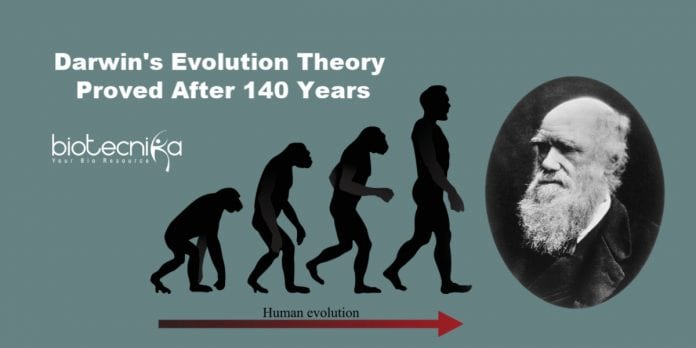Scientists proved one of Darwin’s evolution theories for the first time – nearly 140 years after his death.
Laura van Holstein, lead author of the study released on March 18 in Proceedings of the Royal Society and a Ph.D. student in Biological Anthropology, St John’s University, University of Cambridge discovered mammal subspecies play a more vital role in evolution than formerly thought.
Her study can now be utilized to forecast which all species are to be concentrated by conservationists to protect them from being endangered or extinct.
The animal population that can freely interbreed among them is known as species. Some species have subspecies which are populations having various different physical traits and breeding ranges but within the species. There are 45 subspecies (the most subspecies) of red foxes that are spread out around the globe, Northern giraffes have 3 subspecies that usually stay in different locations to each other and Humans do not have any subspecies.
On the Origin of Species-Darwin’s evolution theories
“We are standing on the shoulders of giants. Darwin had mentioned that animal lineages having more species should contain more ‘varieties’ and subspecies is its modern-day definition in chapter 3 of ‘On the Origin of Species’. My study on the relationship between species and the different subspecies shows that sub-species play a vital role in long-term evolutionary dynamics as well as species evolution in the future. And they always have, which was suspected by Darwin when he was explaining what a species actually was.” said Laura van Holstein.
By taking a look at data gathered by naturalists over hundreds of years, long before Darwin accurately visited the Galapagos Islands on-board HMS Beagle, the anthropologist confirmed Darwin’s theory. After Darwin returned back from a five-year voyage of discovery, ‘On the Origin of Species by Means of Natural Selection‘ was first released in 1859. Darwin argued that organisms slowly evolved via a process known as ‘natural selection‘, referred to as the survival of the fittest in the seminal book. Since it contradicted the Bible’s account of production, his work was very debatable.
The theory that evolution happens differently in terrestrial mammals and non-terrestrial, (sea mammals and bats) because of the differences in their habitats and their capacity to roam openly was also proved in this research.
Holstein said, “The research also discovered that relying on the habitat, evolutionary relationship between mammalian species and subspecies varies. Subspecies form, diversify and also increase in number differently in non-terrestrial as well as terrestrial habitats, and also this consequently impacts how subspecies may at some point become species. As an example, if an all-natural obstacle like a range of mountains gets in the way, it can separate animal groups and send them off by individual evolutionary journeys. Marine and flying animals (for ex: dolphins and bats) have fewer physical barriers in their environment.”
The study discovered whether subspecies could be considered as early speciation, the development of a new species. Holstein said, “The solution was, of course, a Yes, but evolution isn’t established by the very same factors in all groups and since we’ve studied the strength of the relationship between species and subspecies richness, we know why for the first time.”
The research study serves as one more scientific warning, that the human impact on the habitat of animals will not just influence them now, but will certainly impact their future evolution. Conservationists can make use of these data to identify where to concentrate their initiatives.
Holstein said, “How human activities like deforestation and logging will affect evolution in the future by disrupting the species habitat can be predicted by evolutionary models using these findings. The effect on animals will certainly differ depending on how their capacity to roam, or range, is impacted. Even though animal subspecies play a vital role in long term future evolution dynamics but they tend to be neglected.”
Holstein will now check out how her research results can be used to forecast the endangered and also non-endangered species’ rate of speciation.
Notes to editors: What Darwin claimed in his evolution theories on page 55 in ‘On the Origin of Species‘: “From taking a look at species as just strongly-marked and distinct species, I was brought to predict that the species of the bigger genera in each nation would oftener present varieties than the species of the smaller genera, for wherever numerous closely associated species (i.e species of the same genus) have been formed, numerous varieties or incipient species ought, as a general function, to be currently developing. Where lots of big trees grow, we anticipate discovering seedlings.”
Datasets: A lot of the information is from an international collated database of mammalian taxonomy, Wilson and Reeder’s Mammal Species Of The World. The database has centuries’ worth of jobs by taxonomists from around the globe. The build-up of expertise is the combined work of all taxonomists since long back, as the current way of “doing” taxonomy goes all the way back to botanist Carl Linnaeus (1735 ).
Author: Sruthi S






























